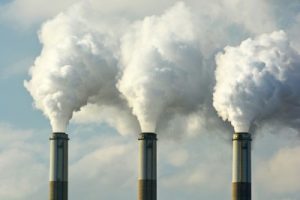A two-pronged effort—one by the EPA and one by Congress—is under way to reform the Clean Air Act’s (CAA) New Source Review (NSR) program. In December 2017 and March 2018, EPA Administrator Scott Pruitt issued two memorandums for Agency regional offices, which somewhat loosened the criteria for determining if NSR is required. Now, House Republicans have issued a discussion draft of a bill that would significantly change the NSR criteria. The bill and industry’s perennial complaints about NSR were discussed at a May 16, 2018, hearing of the Committee on Energy and Commerce’s Subcommittee on Environment.
Modifications That Trigger Permitting
The NSR applies to newly constructed or modified sources of air pollution, although most of the controversy surrounding the NSR applies to modified sources. When a modification increases the amount of any air pollutant emitted or results in the emission of any air pollutant not previously emitted, the source must obtain an NSR permit, which is typically issued by a state that has EPA CAA authorization. Such permits require that the source install state-of-the-art pollution control equipment, which for the largest sources can cost hundreds of millions of dollars. The pivotal question under the NSR is determining when emissions from a modified project reach the permitting threshold.
Pruitt’s Memorandums
Pruitt’s December 2017 memorandum clarified that the EPA will not second-guess a company’s “reasonable” analysis of its projected actual emissions when determining NSR applicability and the associated pre- and post-project source obligations. The March 2018 memo set forth EPA’s interpretation that, in determining whether a proposed project will itself result in a significant emissions increase, any emissions decreases that are projected to occur as a result of the project can also be taken into account in this first step of the NSR applicability analysis. The intent of both memos is to give sources a somewhat wider avenue to avoid NSR permitting.
Adopting the NSPS Emissions Test
The discussion draft introduced by Representative Morgan Griffith (R-VA) would revise the critical emissions test currently used in NSR determinations. The NSR is now determined through an annual emissions projection testthat focuses on whether a project at an existing facility will result in an annual emissions increase that exceeds established significance thresholds. If the project results in a significant annual emissions increase, it is considered a modification, and the owner must obtain an NSR permit before carrying out the project. Those opposed to this test note that it necessitates consideration of complex factors such as projecting future demand of the product being produced and the selection of baseline emissions to use as a comparison point. This type of emissions projection could result in an overestimation of emissions.
Griffith’s bill would replace the annual emissions test with the hourly emissions rate test the EPA uses in its New Source Performance Standards (NSPS) program. If a project does produce a higher hourly emissions rate, the project is determined to be a modification, and the facility is subject to NSPS requirements.
At the hearing, William L. Wehrum, head of EPA’s Office of Air and Radiation, said the Agency does not have an official position on the discussion draft. However, Wehrum himself expressed a preference for the NSPS hourly emissions rate test to determine a maximum design capacity to emit. Also, Wehrum said the draft would resolve the long-standing NSR anomaly wherein installation of pollution control equipment at existing sources can itself trigger NSR.
“This is because, sometimes, the operation of such equipment, while it results in tremendous emissions reductions for some pollutants, may in some instances actually lead to increases in the emissions of other pollutants,” testified Wehrum.
Emphasis on Efficiency, Not Pollution
Most other witnesses at the hearing also favored the objectives of the discussion draft. One exception was Paul D. Baldauf, assistant commissioner of the New Jersey Department of Environmental Protection. Baldauf raised two objections.
“First, the proposed amendments would exempt sources when, ‘…a change in the stationary source that reduces the amount of any pollutant emitted by the source per unit of output,’” he testified. “Thus a project that increases the efficiency of a unit, regardless of whether the project also increases the annual emissions of the unit would be exempted from NSR and its associated emission reductions.
“Second, the proposal would eliminate the requirement to evaluate the project for increases in annual emissions. This could result in major sources expanding the annual capacity of a plant (increasing the number of hours it operates each year) without the inclusion of modern air pollution controls or the replacement of the older equipment with modern more efficient equipment and associated lower air pollution.”
Testimony transcripts and a video of the hearing are available here. The discussion draft is here.

